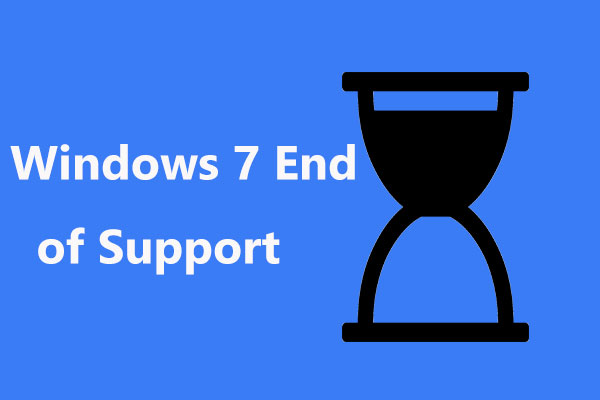Microsoft won't provide the support for Windows Server 2008 and SQL Server 2008 on January 14, 2020, and July 9, 2019 respectively. This means no updates, no patches, no technical support, etc. For PC security, to migrate away from Windows Server 2008 and SQL Server 2008 is urgent. Learn how to perform the migration from this post.
SQL Server 2008 and Windows Server 2008 End of Life
You know, Windows Server 2008 and SQL Server 2008 are the most popular server operating system and database management system up to now.
Windows Server 2008 provides enhances the protection for the operating system, and it is the most stable system and offers high manageability, letting users only need to spend little energy to manage the system and application.
For SQL Server 2008, it can protect your data information well and ensure business sustainability. Besides, it is trustworthy, high-efficiency and intelligent.
However, after around ten years of service, the security updates that Microsoft offers will end. The specific date of Windows Server 2008 end of life is on January 14, 2020, and the data of SQL Server 2008 end of support is on July 9, 2019.
What does this mean? Once Microsoft won’t provide the support to these two products, it means no technical support, no patches, no updates, added cybersecurity vulnerability, and more. Do you prepare for Windows Server 2008 and SQL Server 2008 end of support?
The end of support is coming for SQL Server and Windows Server 2008, thus, you should take measures to protect your data security. To migrate away from Windows Server 2008 and SQL Server 2008 is necessary. This post covers some migration options for organizations that are looking to move to a newer platform.
Options for SQL Server 2008 and Windows Server 2008 Migration
Option 1: Upgrade to a New Version
If you want to remain applications in local, the best option may be installing a newer version of Windows Server and SQL Server. In all installation options, upgrading is the easiest way to keep system settings.
If you want to migrate Windows Server 2008 to 2016, unluckily, there is not a way to directly perform an upgrade from Server 2008 to Server 2016 without a clean install. To preserve system settings, you need to upgrade Server 2008 to Windows Server 2012, and then you can install Windows Server 2016.
Option 2: Enroll in Extended Security Update Program
It may be impossible to upgrade all the servers at once for large clusters. For cases where only part of the hardware can be upgraded at a time, Microsoft provides the new Extended Security Update program.
As to the license, it may be purchased for 75% of the full license cost of the latest version of Windows Server and SQL Server. This service can be canceled anytime and it is charged annually.
Options 3: Migrate to Azure Cloud
For customers who shift Windows Server 2008 and SQL Server 2008 from on-premises into Microsoft’s Azure cloud, Microsoft is offering three years of extended support for the platforms.
Azure offers a number of performance plans. And the initial operating system setup is nearly instantaneous, letting developers set up quick test environments. With high-redundancy and high-availability, Azure can perform a disaster recovery and backup well.
Besides, Microsoft is to release SQL Database Managed Instance, helping users transfer SQL databases on Azure. According to the upgrade guide, this company promises zero-downtime migration for existing SQL servers.
Final Words
What are you still hesitant to? Just take action to start to migrate away from Windows Server 2008 and SQL Server 2008 for security.
